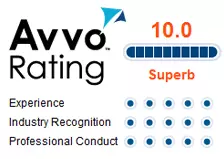As fast as technology has moved in the past 20 years it’s a wonder it’s even possible to drive drunk today. One would think that governments everywhere would have required car manufacturers to install something in cars that would disable them if the driver was drunk.
The problem is that this is not such an easy problem for technology to solve. Ignition interlocks are clearly not up to the task, and like interlocks no other technology that currently exists will work under all circumstances.
That however, is likely to change. For example, according to the Engineering and Physical Sciences Research Counsel a scanning instrument that uses Raman Spectroscopy seems promising.
This instrument involves shining a laser beam onto the suspected sample and measuring the energy of light that scatters from it to determine what chemical compound is present. The chemicals scientists are particularly interested in finding are those that can be used to produce explosives.
According to an article in Bio-Medicine:
Normally this type of spectroscopy is not sensitive enough to detect low concentrations of chemicals, so here the sample is mixed with nanoscale silver particles which amplify the signals of compounds allowing even the smallest trace to be detected.
It is hoped the new sensors will also be the basis for developing ‘breathalyzer’ instruments that could be of particular use for roadside drugs testing in much the same way as the police take breathalyzer samples to detect alcohol.
At present, police officers are only able to use a field impairment test to determine if a person is driving under the influence of drugs. The accuracy of this method has been questioned because of concerns that it is easy to cheat.
While it is impossible to know how many different companies are working on how many different technological solutions to the societal problem of drunk driving, but there are probably many more.
For example, one such company is well on the road to implementing a fascinating new device that may perhaps represent the next generation of bodily alcohol measuring devices.
The name of the company is TruTouch Technologies, Inc., a company based out of Albuquerque, New Mexico is a spin-off of InLight Solutions, Inc. They have developed a non-invasive, purportedly simple to use machine which can determine an individual’s bodily alcohol concentration using Near Infrared (NIR) Spectroscopy.
The device, which they call “The TrueTouch 1100” is about the size of two shoe boxes placed end-to-end and looks a bit like a standard grocery store cash register. In order to measure BAC, the driver need only be directed to place his or her arm across a cradle located on the top of the device. Using NIR spectroscopy, the device measures BAC by shining a light into the driver’s arm then measuring the reflected light.
According to the company’s web site the TrueTouch 1100 solves many of the problems inherent in the current generation of breath and blood testing equipment. For example, use of the TrueTouch 1100 is clean, portable and passive (meaning it does not require the significant cooperation of the driver). Field use does not require police officers to collect samples of bodily fluids thus eliminating the concerns about the possible contamination of breath and blood samples.
NIR Spectroscopy is also highly specific for the molecule being tested, it does not require sample preparation, and with the correct equipment, can be applied anywhere with nearly immediate results.
Will either of these technologies put an end to drunk driving? Probably not, but there probably is something on the horizon that will. Stay tuned.










{ 1 trackback }